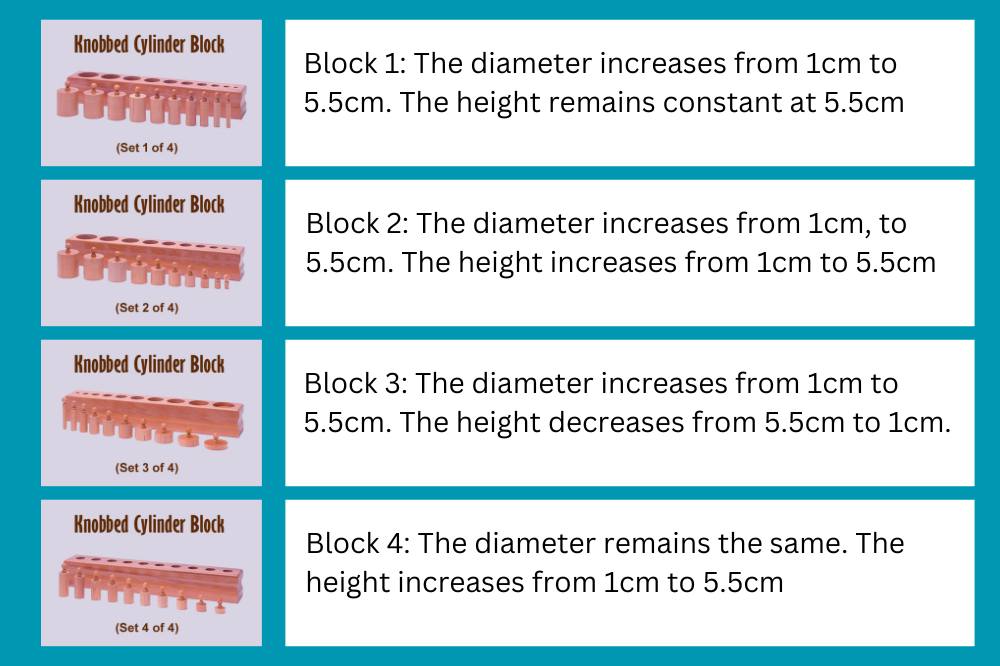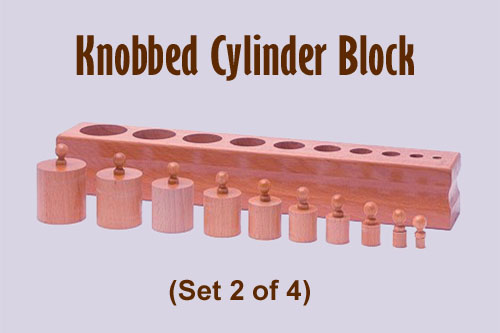In early childhood education, the Montessori approach has consistently stood out for its emphasis on hands-on learning and the use of purposeful materials. There is a large list of Montessori material for classroom activities. One such material that has proven to be very effective is the Knobbed Cylinder Blocks. These intricately designed wooden tool plays a pivotal role in developing cognitive and motor skills in young learners. In this article, we will learn about Knobbed Cylinder Blocks, their various sets with different sizes, and purpose of cylinder blocks in a Montessori classroom.
The Knobbed Cylinder Blocks: An Overview

The Knobbed Cylinder Blocks, an integral component of Montessori education, are a collection of wooden blocks that are meticulously crafted to offer young learners a captivating sensory experience. These blocks come in four distinct sets, each set comprising cylinders of varying sizes, which challenges children to engage their visual, tactile, and spatial perception skills.

Block 1
The cylinders increase in diameter from 1cm to 5.5cm while the height remains consistent at 5.5cm, encouraging learners to recognize the size of cylinders.

Block 2
This set introduces children to varying heights and diameters of cylinders. In this block both dimensions of cylinders increases. The diameter increases from 1c, to 5.5cm. The height increases from 1cm to 5.5cm.

Block 3
In this set, the complexity increases as both height and diameter vary among the cylinders. Children refine their discrimination skills even further, arranging the cylinders in ascending and descending order based on both dimensions. The diameter of cylinders increases from 1cm to 5.5cm while the height of cylinders decreases from 5.5cm to 1cm.

Block 4
The cylinders increase in height from 1cm to 5.5cm while the diameter remains consistent, encouraging learners to recognize and arrange them in sequential order.

